Assess the lending risk of your retail client
With just a few API calls you can quickly get the data you need to perform a credit risk assessment of your client, replacing any manual and error-prone processes.
In this article, we'll take you through a high-level overview of the risk metrics you can extract from banking data. Then, based on these data points, you can apply your custom models to evaluate your clients.
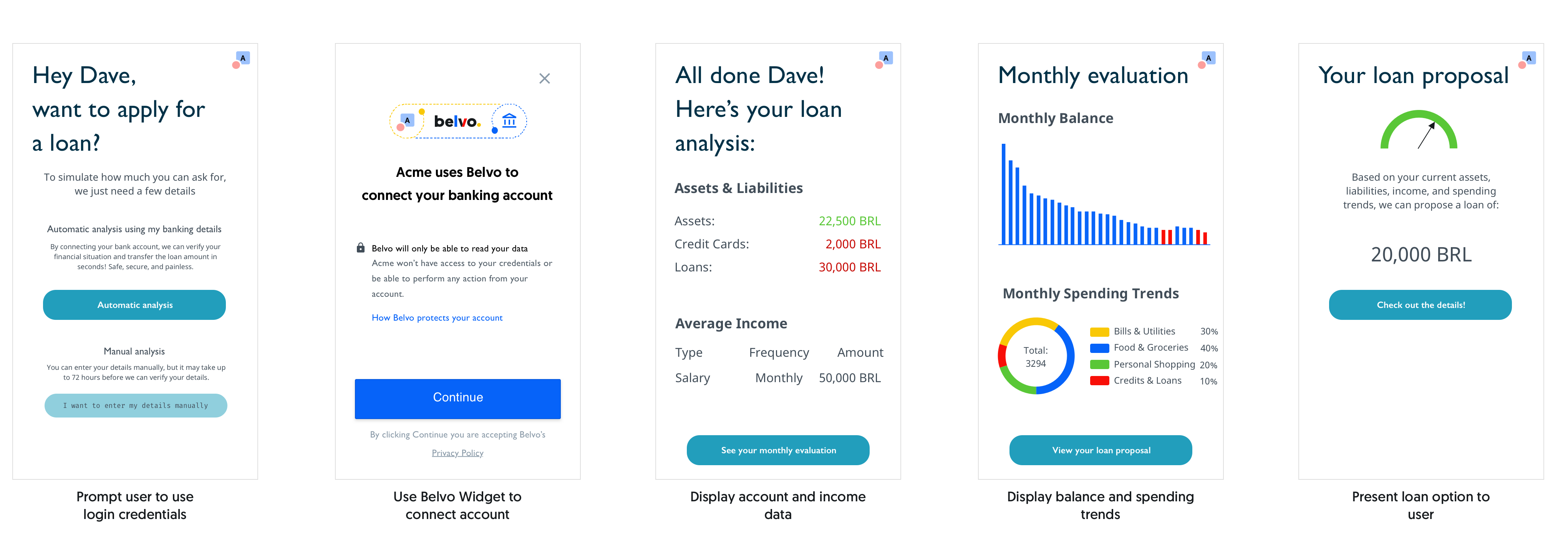
General Flow
By leveraging the data retrieved from the accounts, incomes, and transactions endpoints, you'll then be able to perform a robust risk analysis of your client. In the diagram below, you can see the general flow of the calls you'll need to make, and the information you will receive, to perform the credit risk assessment.
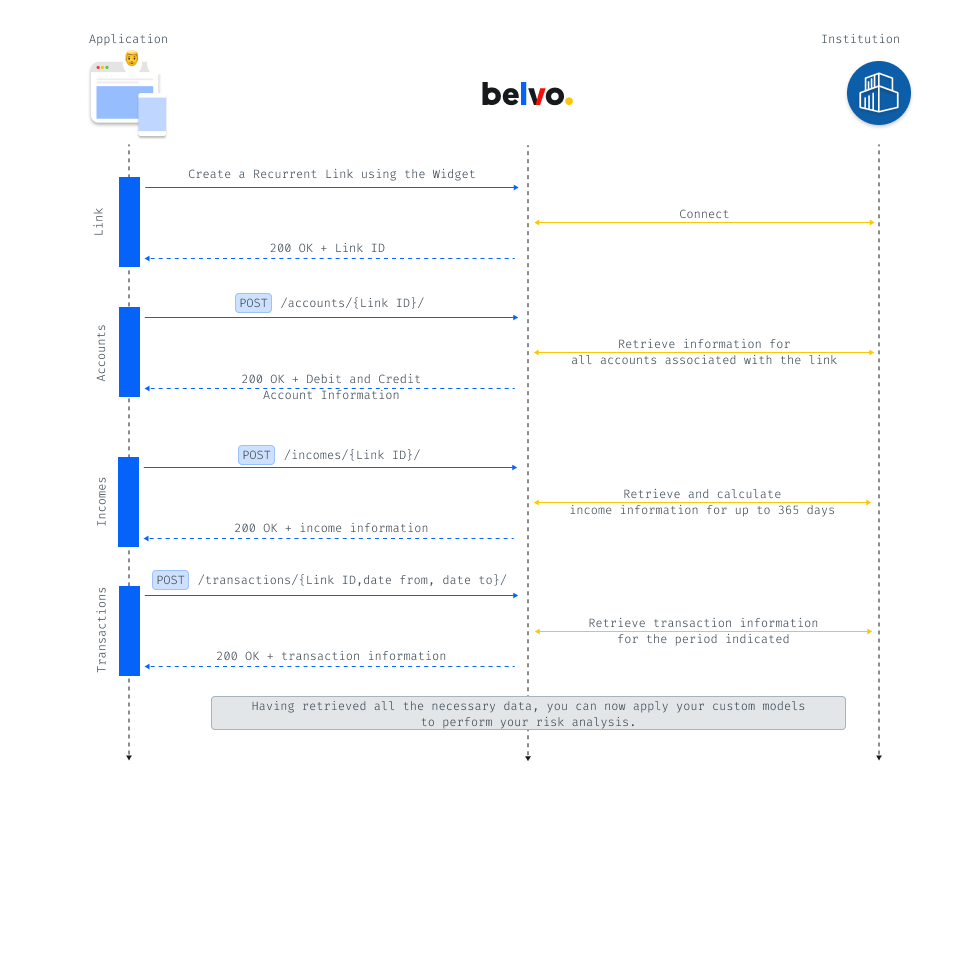
Single Links
We recommend that you use single links when performing risk assessment. This way, you'll always receive the most current information when performing your risk assessment.
Accounts: get the general overview
Why look at your clients accounts?
By looking at the accounts your client has, you can get a high-level view of their current assets and liabilities. It's the first step for your risk analysis, and it'll allow you to retrieve:
- The current available balance of their checking or savings accounts
- The current balance of their credit cards
- Any loans that your client may have
Current balance for checking and savings accounts
For checking and savings accounts, focus on:
- The available balance of their account
This will give you the cash assets that your client currently has.
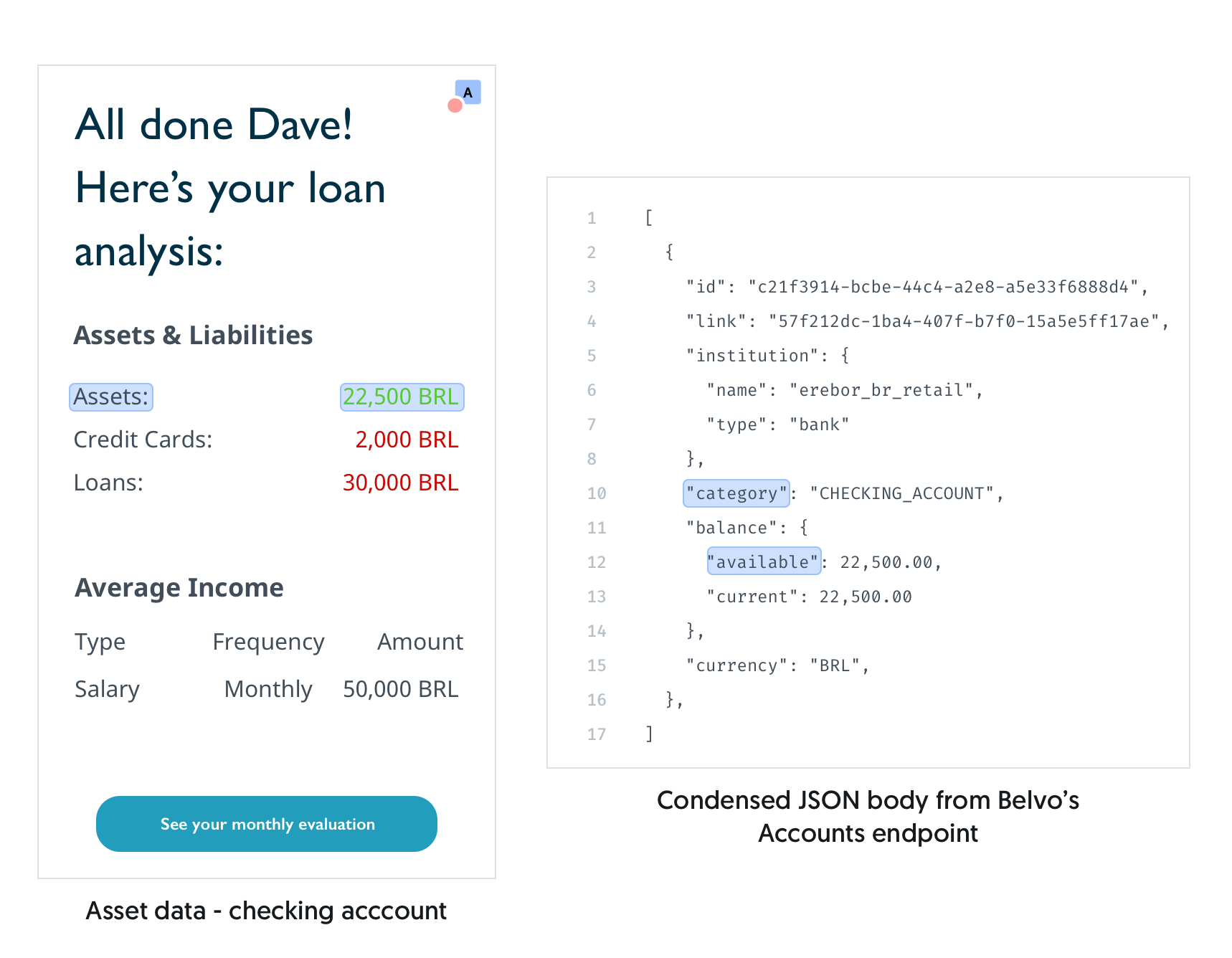
Current credit card usage
With credit cards, the most interesting metrics are:
- The current and available balances
The current balance for credit cards indicates how much the client has spent in the current billing period. The available balance on the other hand indicates how much more they can spend before they reach their credit card limit. - The credit card limit
Indicates the spending limit the institution has authorized your client.

You can also confirm that the credit card is registered with the given country's credit bureau. If the card is not registered, then potentially there could be a possibility of fraud.
Get the status of loan accounts
With loan accounts, you want to have a look at:
- The loan type (long term loans are a great indicator of stability)
- The amount remaining on the loan
There are of course many other elements you can consider in your models (such as how much their monthly repayment is), however, for a simple risk assessment, the two loan data points mentioned above are enough.
Incomes: confirm how much they earn
Why look at the incomes?
By looking at your clients incomes, you can confirm:
- The type of income your client receives
Find out if they are a salaried employee or retired with a pension. If you see that they often receive cash deposits as a type of income, this could indicate that they receive their salary in cash from their employer. - The amount they receive
- The frequency that they receive it
This not only indicates the reliability of the income, but also you can have an idea of when you can expect the client to pay their loan installment.
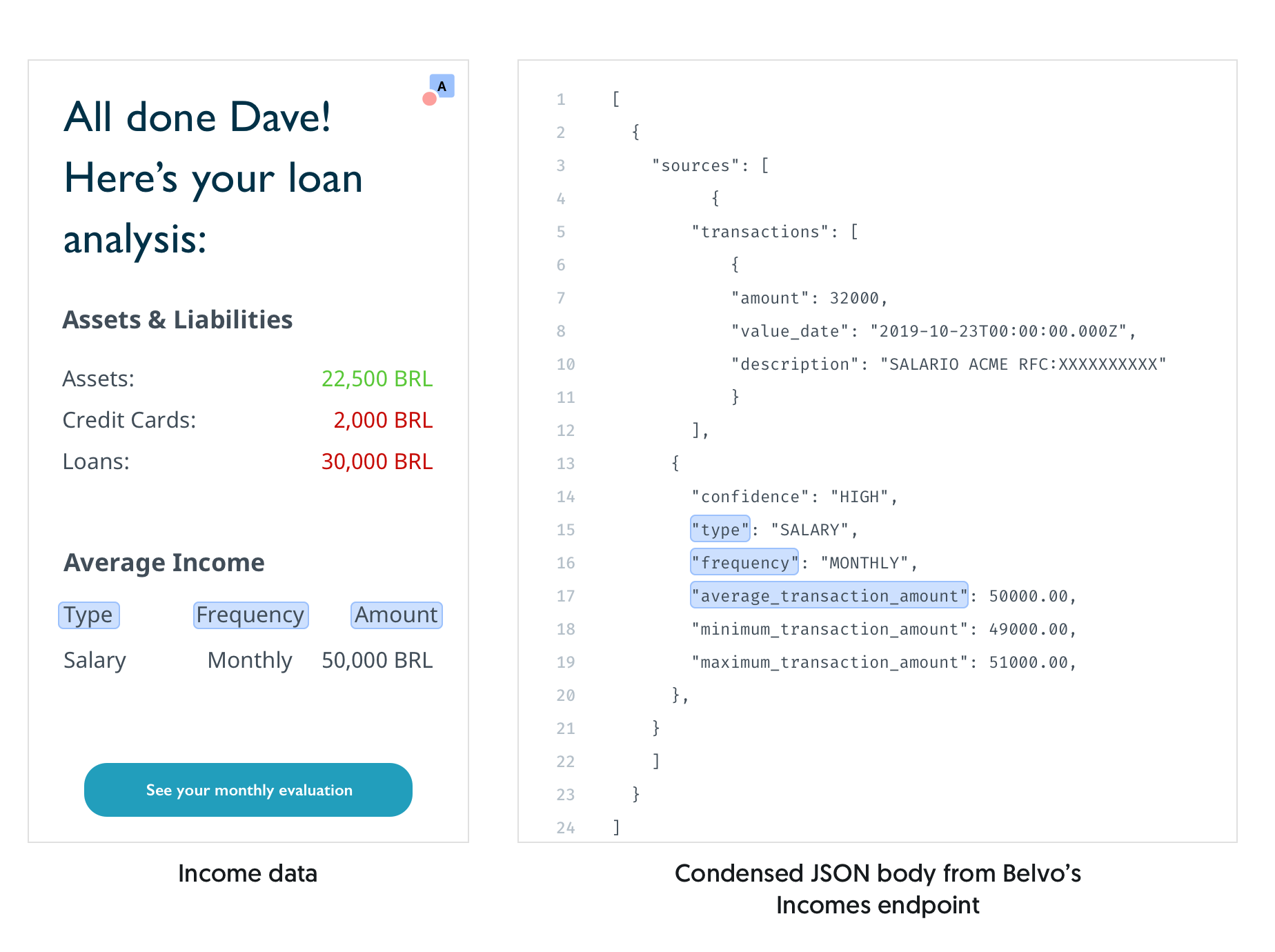
Transactions: analyze spending habits
Why look at the transactions?
By looking at the transactions your customer has made in the last 90 days, you can get a great idea of their spending habits over a given period of time.
For each transaction, you can see the:
- category of the transaction (Bills & Utilities or Food & Groceries)
- type (inflow or outflow)
- amount
- description of the transaction
Transactions related to Credits & Loans are a good indicator of whether the customer has credit products with banks or other lenders.
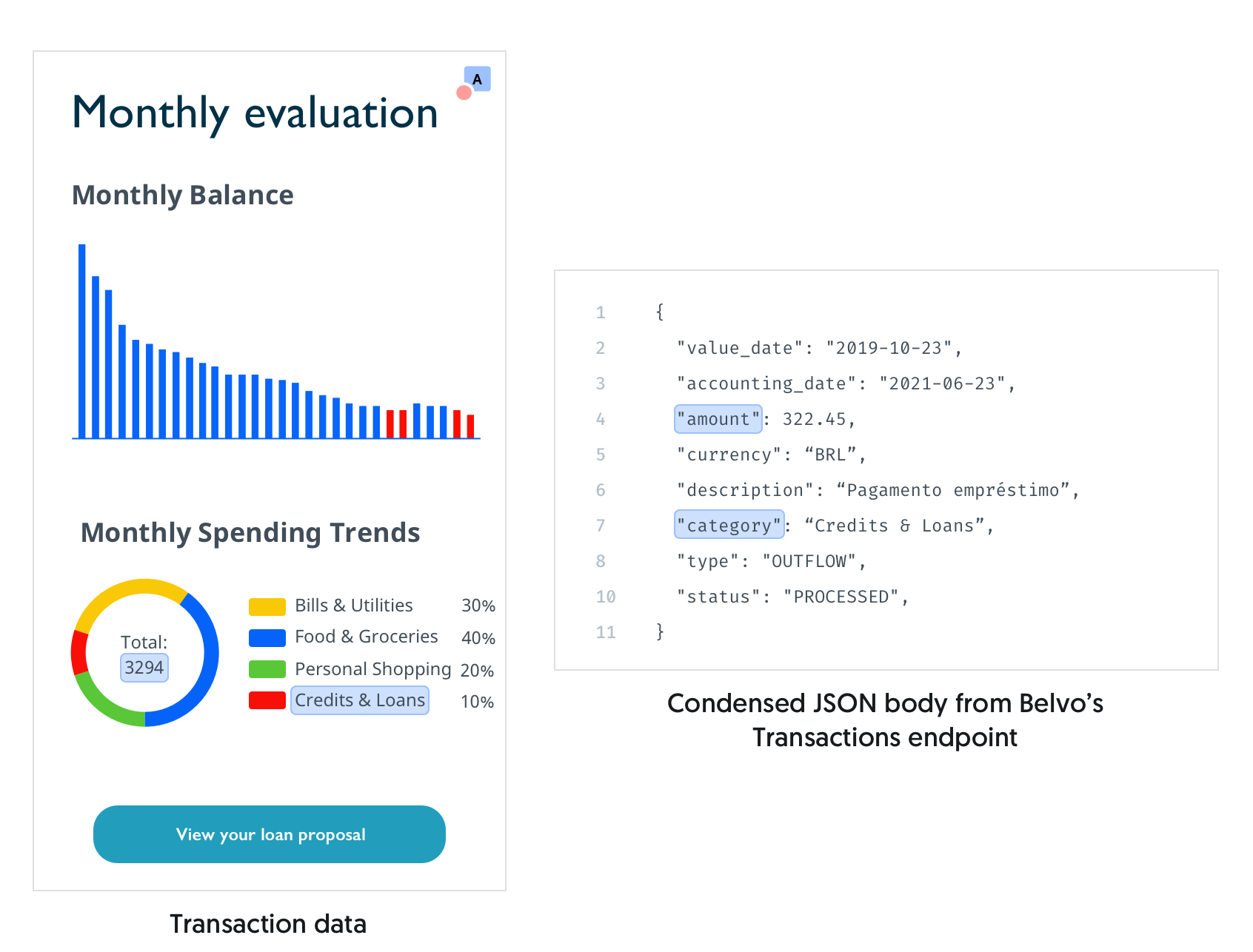
Your analysis
Now that you know the basic data points to get a 360-degree view of your customer, you can augment the data and perform your own custom analysis to evaluate your clients.
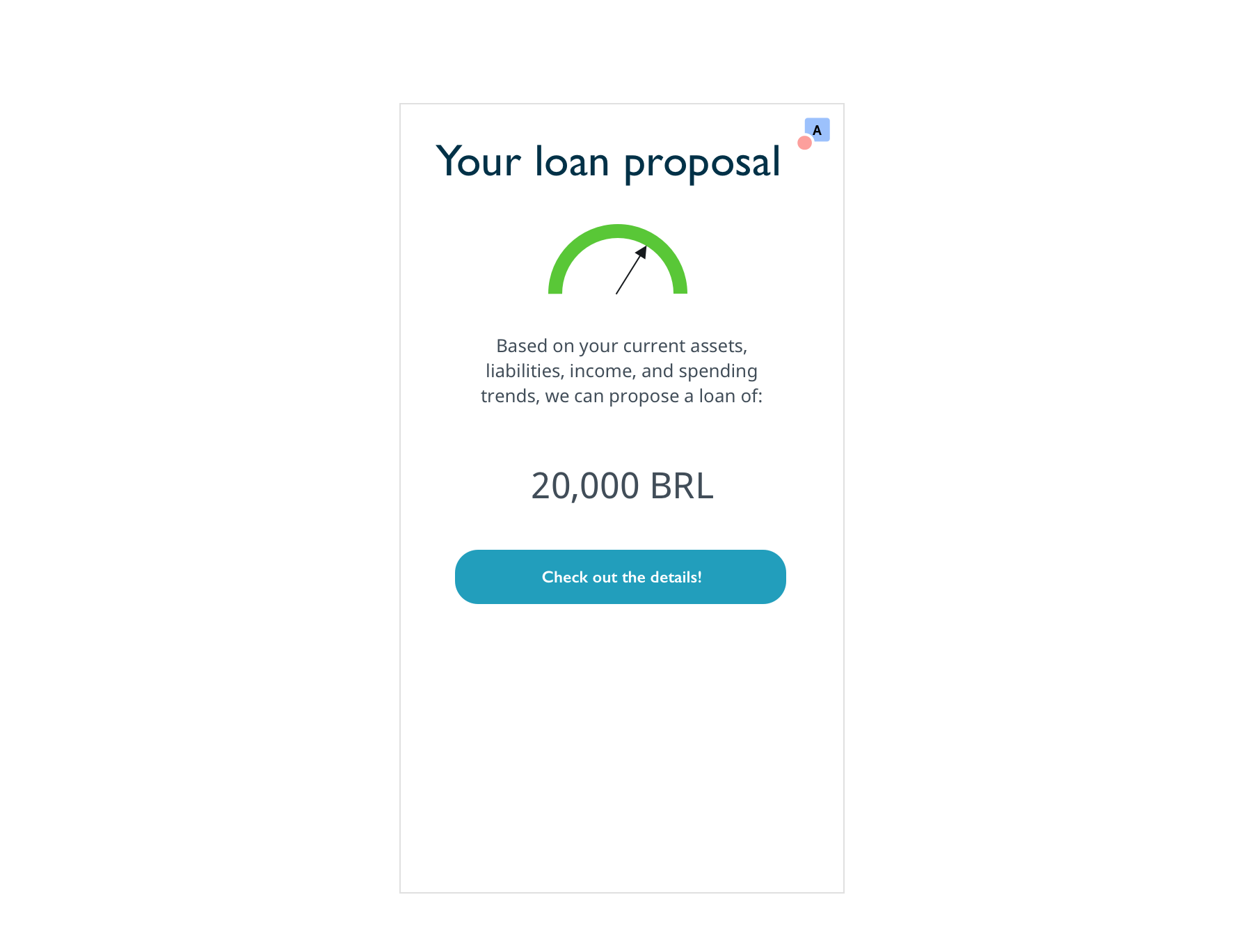
Done
And just like that, with a few API calls you can quickly perform a robust risk assessment of your client.
Related Guides
Banking API
Follow these high-level flows using Belvo's Banking product to:
Verify your user's personal and banking information
Use banking data to verify your user's identification and banking information.
Help users manage their finances
See just how easy it is to get the right data to help your users manage their finances.
Fiscal API
Use our Fiscal product to quickly:
Verify your user using fiscal information
Use Mexico's SAT to verify your user's fiscal information.
Updated 7 months ago